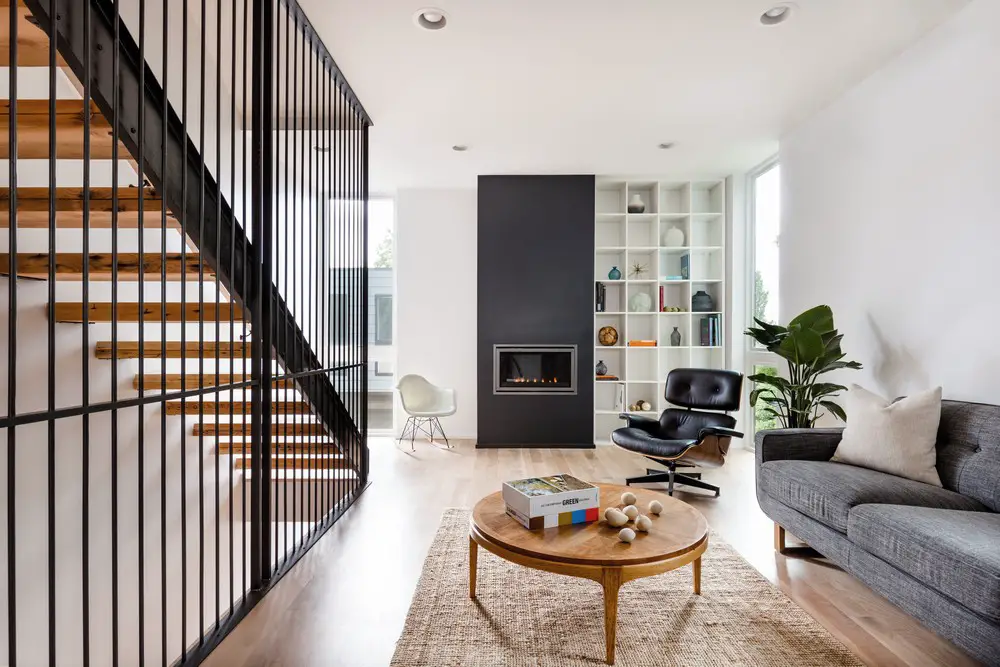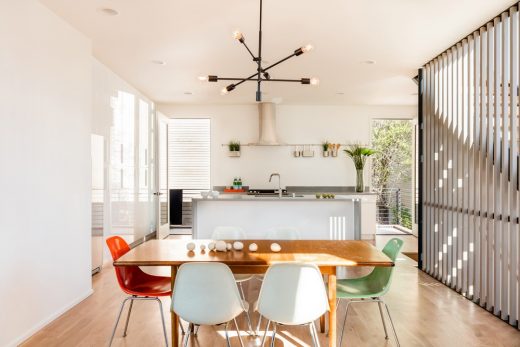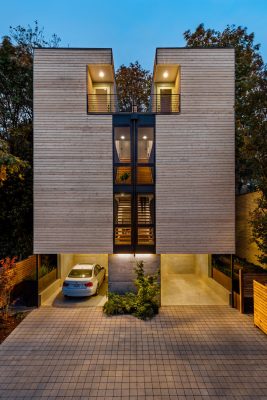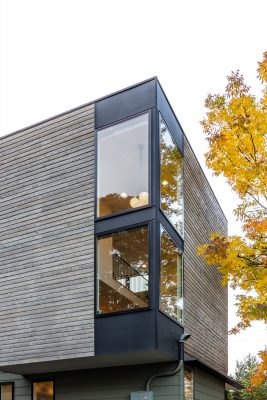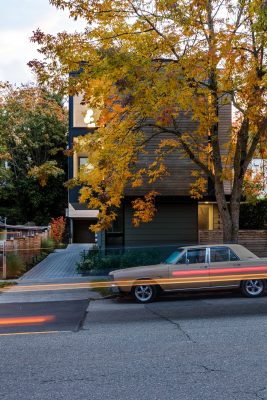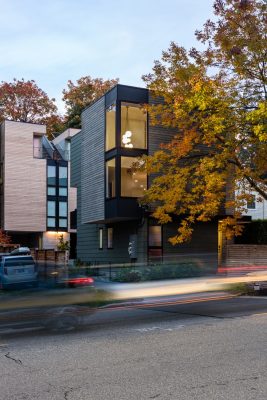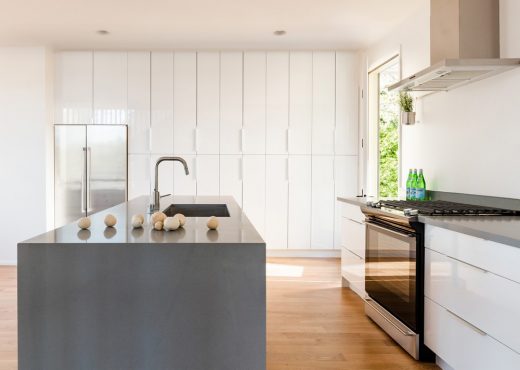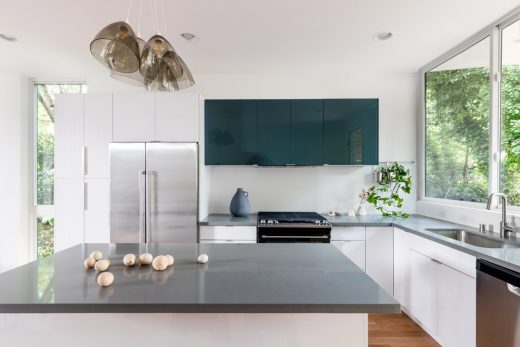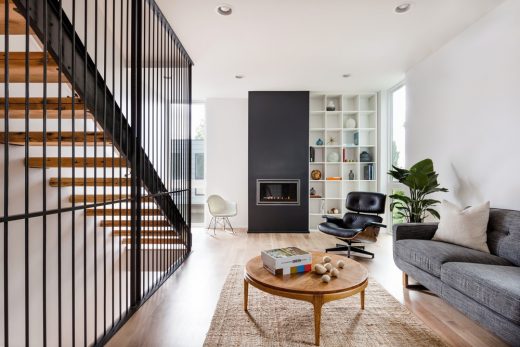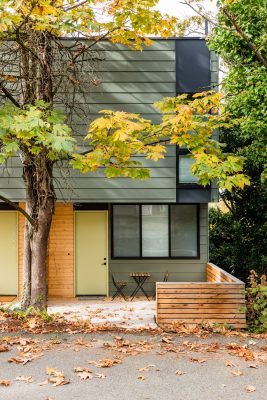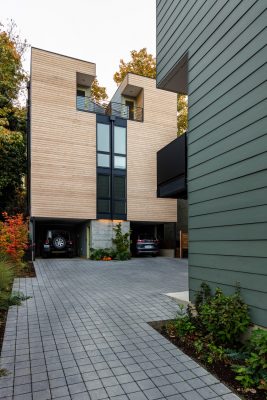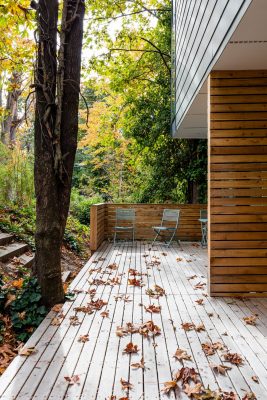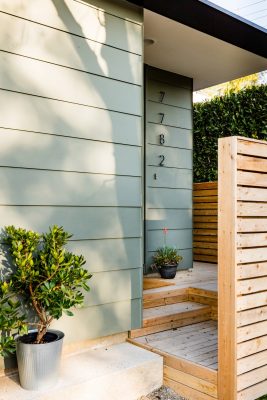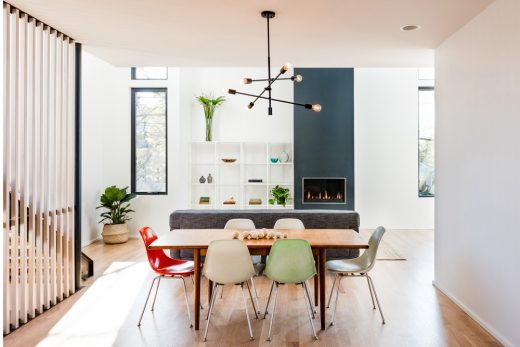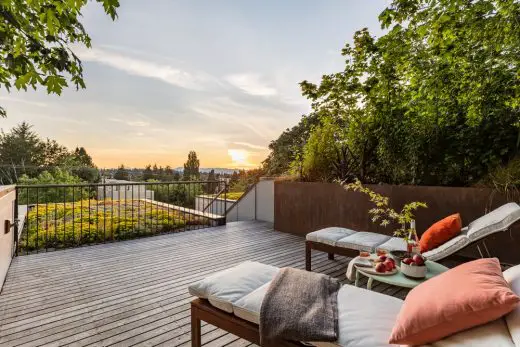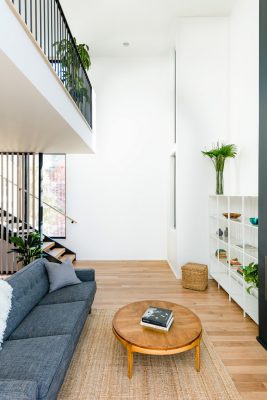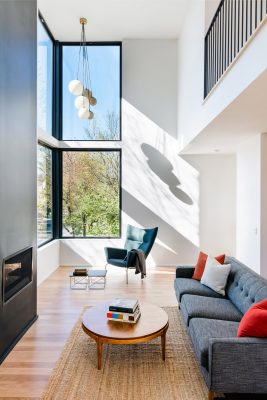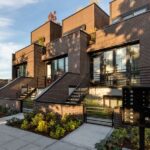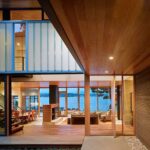Tsuga Townhomes, Seattle Real Estate, Washington Housing Development, Architecture Images
Tsuga Townhomes in Seattle
May 8, 2021
Tsuga Townhomes
Architecture: Wittman Estes
Location: Seattle, Washington, USA
Rapidly escalating construction costs in Seattle have resulted in high volume, low quality market rate housing. In 2019, housing construction costs in Seattle were the sixth highest in the world, averaging $338/SF. The high cost of construction led to a proliferation of generic production housing, transforming Seattle into neighborhoods of hermetically sealed faux-modern boxes, built of low-cost materials and disconnected from the outdoors.
Tsuga Townhomes set out to resolve this paradox of low cost and high quality, working to achieve excellent sustainable design while balancing the construction cost proforma. The three-unit urban infill project was completed for 44% below the cost of the Seattle average, while raising the bar for design and sustainability. Using design to maneuver complicated development restrictions, the project fit three dwellings on a 5,040 square foot site that was designated an environmentally critical area steep slope. The site plan—a careful composition of outdoor living spaces—includes a series of green roofs and bioretention planters, captures rainwater for plantings and reduces runoff. The design team selected energy efficient mechanical systems and went beyond the code for insulation to achieve Four Star Built Green certification.
In order to achieve their design goals and cost targets, the architects were their own client- purchasing the land and developing and building the project themselves. In typical developer housing, the focus is on minimizing design costs. More creative possibilities for materials, spatial layouts, and detailing were achieved by linking architecture with development. Acting as architect, developer, and contractor, the architects were able to work directly with the fabricators and tradespeople, creating efficiencies and opportunities for more custom and higher quality design and details at a lower price.
A single-family lot was subdivided into a dense cluster of three units, providing three dwellings where there had been a single home. The location is at the intersection of zones where single-family houses transition to four-story apartment buildings is representative of the historic neighborhood’s evolution from small, single family worker houses built at the turn of the century to higher density urban infill townhomes.
The main house sits along the busy arterial of Highland Park Way, while the duplex is nestled into the hillside and wooded greenbelt along 8th Avenue with focused views in between adjacent buildings and towards trees and nature, accessible to the outside onto decks and terraces. The townhomes are accessible at multiple levels. The main house is entered through a front porch off the sidewalk on Highland Park Way and the duplex has entries from both the auto court and from a porch the pedestrian access off 8th Avenue using the steep slope as connecting device between the two streets.
Local Western Red Hemlock, also known as Tsuga wood, is a historic material used by local Salish people. Woodcraft and detailing using Tsuga screens were incorporated into the interiors. Access to sunlight and connection to nature were guiding design principles, seeking a long-lasting building suited to Seattle’s dark and wet northern climate. The vertical, expression of the duplex and textures of cedar recall both the woodcraft of the Salish tribes and the later heritage of the woodwork of Scandinavian settlers.
A double height living space and mezzanine above in the main house includes an iconic corner window and pendant that are visible along the busy adjacent arterial of Highland Park Way. A south facing ‘megawindow’ is a sixteen-foot-tall window next to floating stairs with a Tsuga hemlock wood screen that allow south direct sunlight to enter while filtering privacy for the dining room and kitchen.
The duplex is built around a central spine of open floating stairs and windows, designed to maximize natural daylight and access to outdoors within a narrow footprint. The five levels of the duplex have usable outdoor space on the 1st, 3rd, 4th, and rooftop, providing a feeling of generosity in the narrow 14-foot floor plates. The steep slope provided the benefit of a terraced, stepping building section that connected the lower and upper connections to the landscape.
Making a healthy living environment that reduces energy use and costs was a design goal. The site plan, which includes a series of green roofs and water harvesting bio-retention planters, captures rainwater for plantings and reduces runoff. Energy efficient mechanical systems, including on-demand hot water heaters, air source heat pumps, low flow water fixtures were installed. High performance insulation was installed on the roof and floors, and the buildings achieved Four Star Built Green certification.
Green roofs, terraces, and porches create ‘buffer zones’ that filter between privacy and openness. Landscape is used as mediator to allows for subtle gradations of public and private, allowing the residents to choose when to be seen and when to be private. The floating stairs are made of reclaimed 3″x12″ Douglas fir beams from the deconstructed historic Inland Foods Warehouse in Lewiston, Idaho. A south facing ‘megawindow’ was positioned to maximize solar load, a useful energy saver in Seattle where keeping the home warm outweighs the need for keeping it cool and reduces energy use and heating costs for residents. Other strategies such as highly insulated roofs and floors, air source heat pumps, and eco-friendly finish materials reinforce the focus on energy efficiency and sustainability.
Tsuga Townhomes in Seattle, Washington – Building Information
Architect: Wittman Estes
Structural Engineer: Joshua Welch Engineering
Builder: Witttman Estes
Wittman Estes design team
Matt Wittman, AIA, LEED AP
Jody Estes
Naomi Javanifard
Ashton Wesely
Jen Sutherland
Faith Swickard
Julia Frost
Photography: Miranda Estes
Tsuga Townhomes, Seattle Washington images / information received 080521 from Wittman Estes
Location: Seattle, Washington, USA
Washington Architecture
Seattle Architecture Designs – chronological list
Architects: Bohlin Cywinski Jackson
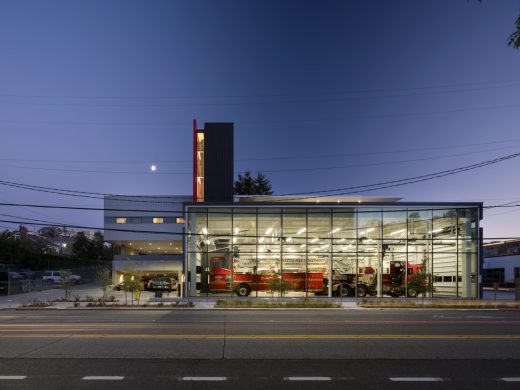
photography : Nic Lehoux
Seattle Fire Station 32
Design: LMN Architects
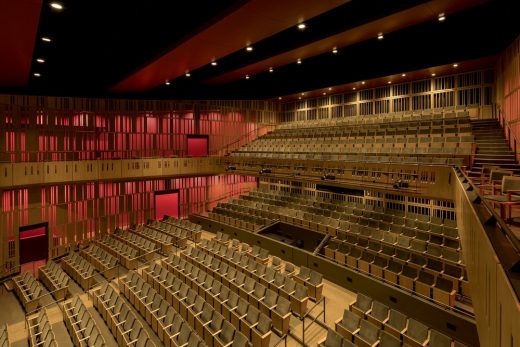
photo : Jeremy Bittermann
Federal Way PAEC Seattle Building
Design: SkB Architects
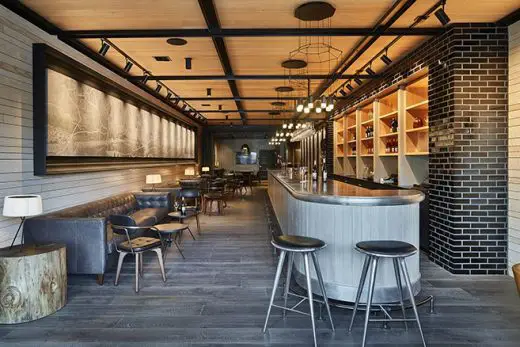
photo : Benjamin Benschneider
Rocky Pond Winery Tasting Room in Chelan, Washington
US Architecture Designs – chronological list
Seattle Buildings – Selection
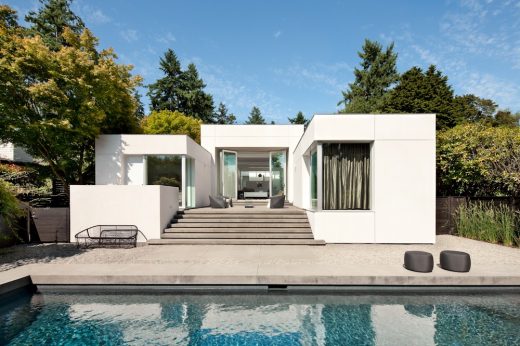
photo : Lara Swimmer
Washington house by SkB Architects
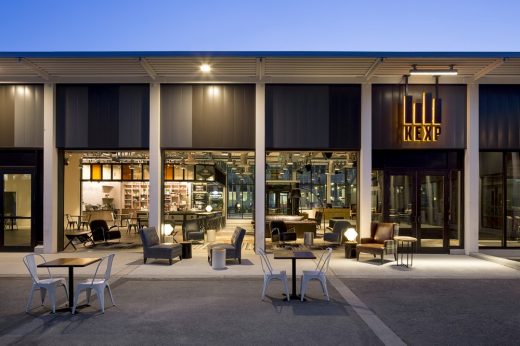
photo : Jeremy Bittermann
Washington building by SkB Architects
Comments / photos for the Tsuga Townhomes, Seattle Washington design by architects Wittman Estes page welcome

